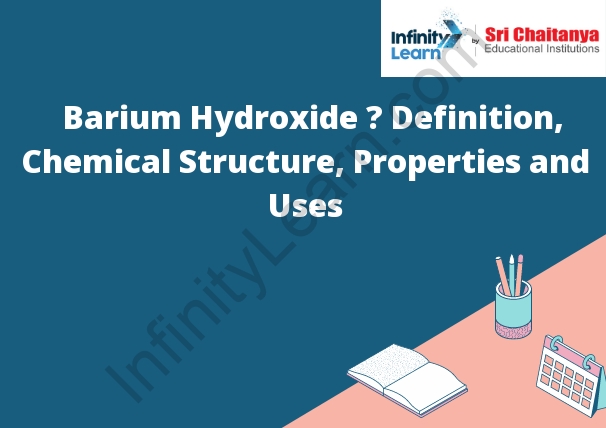Table of Contents
Definition of Barium Hydroxide
Barium hydroxide is an inorganic compound with the chemical formula Ba(OH)2. It is a white solid that is soluble in water. It is produced by the reaction of barium oxide with water. Barium hydroxide is used in the production of barium carbonate, barium sulfate, and other barium compounds. It is also used as a flux in metal welding.

Chemical Structure of Barium Hydroxide
Barium hydroxide is a white solid with the chemical formula Ba(OH)2. It is soluble in water, producing a strongly alkaline solution. Barium hydroxide is used in the production of other barium compounds, as a flux in metallurgy, and as a source of barium ions in chemical analysis.
Properties of Barium Hydroxide
Barium hydroxide is a basic inorganic compound with the chemical formula Ba(OH)2. It is a white solid that is highly soluble in water. Barium hydroxide is a strong base that can react with acids to form salts. It is used in the manufacture of other barium compounds, such as barium sulfate.
Barium Oxide: A Strong Base
BaO is a strong base that is soluble in water. It reacts with acids to form salts and releases oxygen.
Melting Point
The melting point of a substance is the temperature at which it changes from a solid to a liquid.
Solubility
- soluble in water
- Chemical Formula: C4H8O2
- Aromatic: No
Boiling Point
Boiling point is the temperature at which the vapor pressure of a liquid is equal to the atmospheric pressure. At this point, the liquid will boil.
Other Properties of Barium Hydroxide
Barium hydroxide is a white solid that is soluble in water. It is a basic oxide and reacts with acids to form salts. It is used in the manufacture of other barium compounds, in the production of glass, and as a catalyst.
Properties of Barium Hydroxide At A Glance
- Atomic Symbol: Ba
- Atomic Number: 56
- Melting Point: 903 degrees Fahrenheit
- Boiling Point: 3,500 degrees Fahrenheit
- Density: 3.6 grams per cubic centimeter
Endothermic Reaction
Endothermic reactions are those that absorb energy from the surroundings, while exothermic reactions release energy. In an endothermic reaction, the reactants must have a higher energy than the products in order for the reaction to take place. This difference in energy is what drives the reaction.
An example of an endothermic reaction is the melting of ice. In this reaction, the energy from the surroundings is absorbed by the ice, causing it to melt. The energy is used to break the bonds between the water molecules.
Uses
- This medication is used to treat a variety of skin conditions (e.g., eczema, psoriasis, rash). Clobetasol reduces the inflammation and itching associated with these conditions.
- This medication is also used to treat scalp psoriasis.
How to use Clobetasol propionate topical
- This medication is for use on the skin only. Apply a thin layer of the medication to the affected area and rub it in gently.
- Do not use this medication on the face, under the arms, on the groin, or on the chest. Avoid contact with the eyes. If the medication gets into the eyes, rinse them with plenty of water.
- If you are using the foam form of this medication, shake the can well before each use.
- Do not wrap, bandage, or cover the treated area unless directed to do so by your doctor.
- This medication should not be used for long-term treatment.
- Use this medication regularly to get the most benefit from it. To help you remember, use it at the same time each day.
- Tell your doctor if your condition does not improve or if it worsens.
Barium Hydroxide Can Be Hazardous
BaOH is a strong base that can cause skin and eye irritation. It can also be harmful if inhaled or swallowed.









